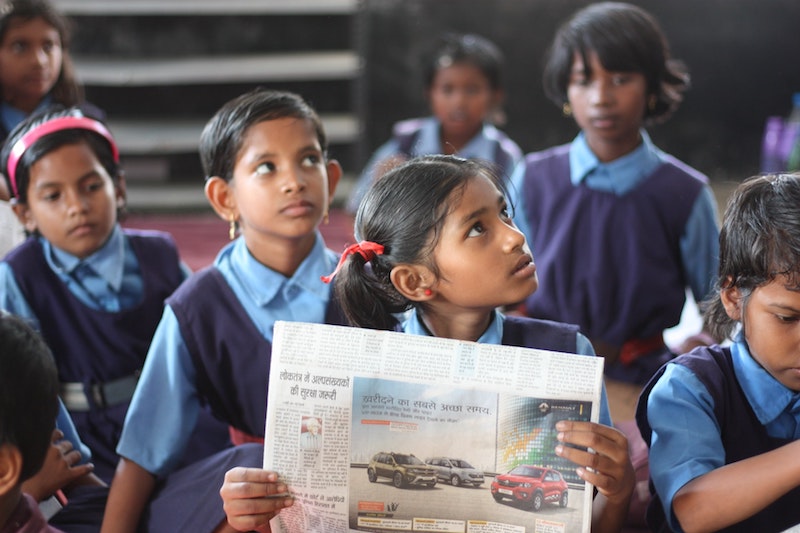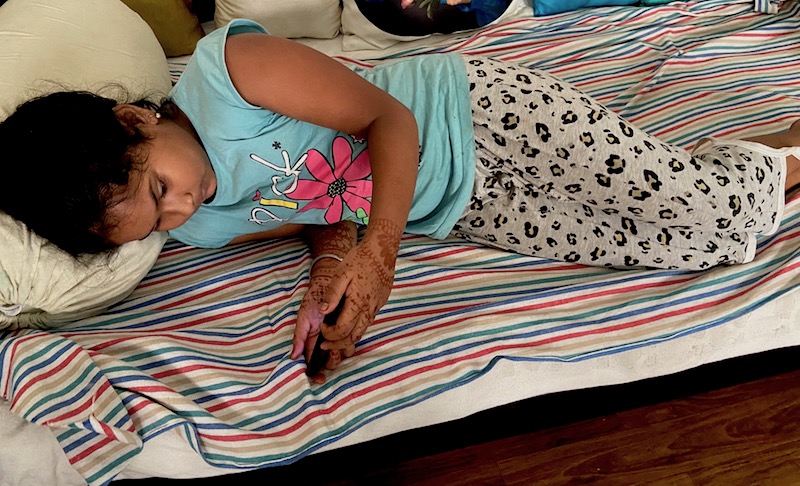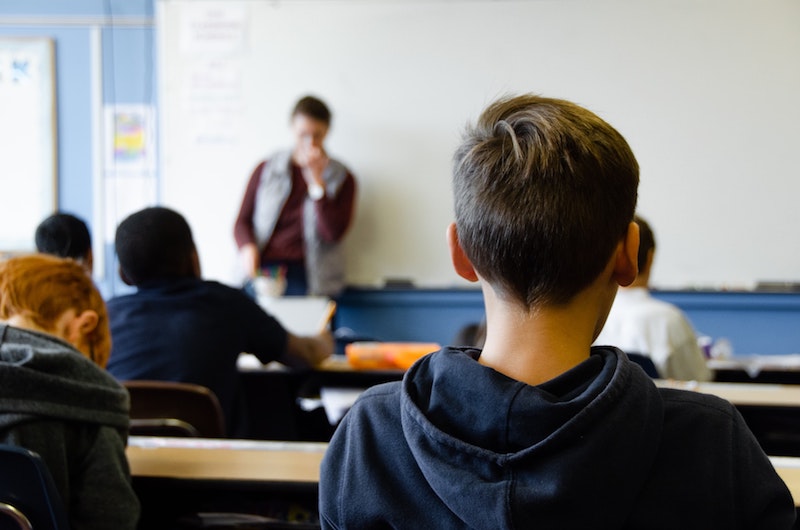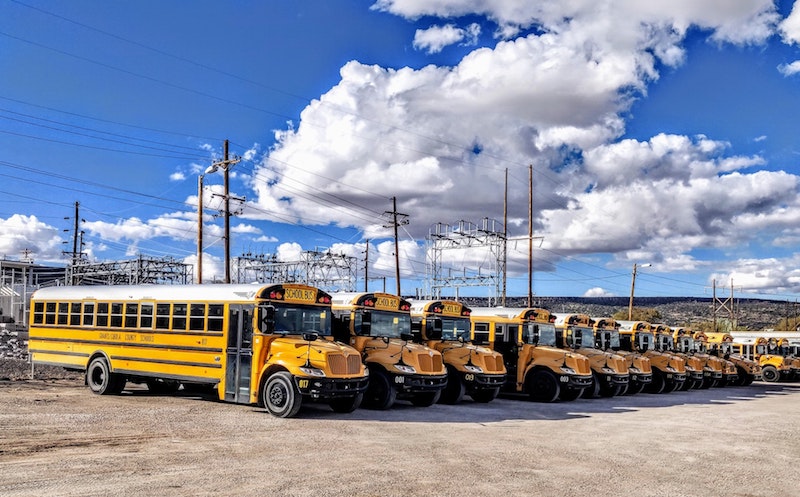 Education I Digital Divide
Education I Digital Divide
Covid-19: Digital gap fuels inequality among students worldwide
Education has always been rife with inequity worldwide and Covid-19 laid bare the widening gulf between haves and have-nots. Unequal access to technology left some kids stranded while others flourished – both in the United States and India, and across the globe. Ian Laird and DC Benincasa from USA and Shaibalina Choudhury from India report
Fourth grade teacher Autumn Case in USA figures nearly three quarters of her students don’t have reliable access to broadband internet. So when school went remote during the pandemic, she had to give them packets full of course materials so they could do their schoolwork.
“Just keeping in contact with students was a daily struggle, let alone teaching them,” said Case, who teaches social studies in Licking, Missouri, a rural community of less than 3,000 people. “How do you get a hold of students if they don’t have internet access and they don’t have phones?”
In many ways, the coronavirus pandemic laid bare -- and worsened -- the widening gulf between haves and have-nots. Education has always been rife with inequity, and the pandemic caused an unprecedented shift to online education worldwide. But unequal access to technology left some kids stranded while others flourished -- in the United States and across the globe.
Schools for more than 168 million children around the world have been completely closed for almost an entire year due to coronavirus lockdowns, according to a report in March from the United Nations Children's Fund. Almost overnight, internet access and a smartphone or laptop became necessities. But not all students had them.
Adrija Ghoroi, a class 7 student in a government school in Kolkata, the capital of India’s West Bengal state, has been forced to miss online classes because her father is the only one in the family who has a smartphone. She’s looking forward to resuming in-person learning.
Tuktuk, a nine-year-old girl from an economically weaker section of India, manages her online classes with a basic smartphone that her mother has been gifted by her employer.
Her mother Swati (known by her first name) works as a house maid in a family in the city of Kolkata but can hardly afford a smartphone.
The smartphone she owns now, thanks to her employer, is basic. She is always worried about the phone malfunctioning affecting her daughter's online classes.
 Tuktuk, a nine-year-old girl from an economically weaker section of India, manages her online classes with a basic smartphone that her mother has been gifted by her employer.
Tuktuk, a nine-year-old girl from an economically weaker section of India, manages her online classes with a basic smartphone that her mother has been gifted by her employer.
Only 10.7% of India’s households have a computer, according to the country’s 2018 National Sample Survey data. The report also estimates that 23.8% of households have the internet and 16.5% of Indians know how to operate a computer.
There is also a large gap between rural and urban technology access in India. For instance, the report estimates that 23.4% of urban households have a computer, while only 4.4% of rural households have one. Also, it estimates that 42% of urban households have an internet connection, compared with 14.9% of rural households.
For many Indian students, the closure of schools meant the end of education.
For many American students, it meant falling further and further behind.
The digital divide
Puja Marwaha, CEO of Child Rights and You (CRY), a non-governmental organization in India focused on children’s rights, said the shift to e-learning was good in theory, but made it more likely for students with poor broadband access to drop out of education.
“It left millions of socio-economically marginalized children high and dry in the remotest corners of the country – resulting in creating a huge digital divide, ultimately leading to tremendous digital discrimination,” Marwaha said.
“We have reasons to fear that a big number of these children will be permanently dropped out from education even when the situation limps back to normalcy.”
Government schools in West Bengal, a state in Eastern India, have started holding classes outside, where students are provided with soap and are required to keep their masks on at all times. These so-called ‘lockdown schools’ are focused on continuing to educate children without access to the internet.
In Missouri, a Midwest state in USA full of rural communities, an estimated 23% of students lack sufficient internet access, according to a 2020 report by the Missouri Department of Economic Development.
Todd Fuller, marketing and communications director for the Missouri State Teachers Association, explained the extreme lengths to which some students have gone just to have a serviceable internet connection.
 A US classroom in Chicago before Covid-19 hit the world. Photo by Taylor Wilcox / Unsplash
A US classroom in Chicago before Covid-19 hit the world. Photo by Taylor Wilcox / Unsplash
“Being in a school district, such as Paris, Missouri, the only way that you're going to be able to get any kind of Internet access is you need to go sit in the parking lot of the school district or the school building and access their system through wifi from the parking lot,” Fuller said. “Now that's not productive, and that's not fair to those students.”
Rural communities aren’t the only ones that lack equitable broadband access.
Rep. Ingrid Burnett, D-Kansas City, has been working in education around the large Midwestern city for more than 37 years.
Burnett said there’s a large income gap in her district, so many students lack broadband.
“We have refugee immigrant children living in really close quarters, and we have areas where we have really beautiful old mansions,” Burnett said. “The idea that this disparity is divided by urban and rural is a mistake.”
While rural broadband issues involve affordability and lack of internet providers, urban communities can struggle to have dependable internet access due to limitations in technology.
“It’s sort of like there isn’t enough roadway for the traffic, and we experience these traffic jams through the internet,” Burnett said.
In addition to lacking technology, many lower-income students live in homes without a dedicated workspace for them. Some must care for younger siblings throughout the day and don’t have parents or guardians at home to help them stay engaged, Fuller said. Some don’t even have a home.
Poor students in India face similar obstacles.
“The disadvantaged students wouldn’t have access to someone who is aware of the situation they are facing and can help navigate them,” said Preetham Murva, director of Fly Higher India, a non-governmental organization supporting children. “Interaction with a mentor/ teacher/ well-wisher is like a potion in such scenarios.”
Lasting damage
For kids without access to technology during the pandemic, valuable time and learning opportunities were missed, causing lasting damage, said Megan Bledsoe, a sixth-grade counsellor in Vancouver, Washington. She said everyone will be playing some form of catch-up, and U.S. schools should use federal COVID relief funds to expand academic and social services.
“Hopefully those students that were not able to engage with their education while remote for whatever reason can be able to have those additional academic supports through the summer,” Bledsoe said. “Ideally we will have interventions and support that will play out for several years to come for providing extra academic support for those that are lagging in their reading, writing and math.”
The pandemic not only made it harder to educate students; it also threatens to further widen the gender gap in learning. In India, the education of girls is sometimes not prioritized even when schooling is free, and with the pandemic, 10 million girls in India could drop out of secondary school, according to a report released by the Right to Education Forum.
Dropping out doesn’t just prevent girls from receiving an education and accessing higher-paying jobs. Marwaha said it could also lead to more early marriages, child trafficking, and violence against women.
 Parked school buses in USA remain inoperative / Unsplash
Parked school buses in USA remain inoperative / Unsplash
Education experts in Missouri also predict lasting damage to kids who fall behind or drop out of school -- leading to worsening economic inequality. During the pandemic, “whatever gap existed has gotten worse,” said Chris Neale, assistant commissioner for the Office of Quality Schools at the Missouri Department of Elementary and Secondary Education.
Students from lower-income communities, where opportunities and resources are already scarce, frequently had more difficulties with online learning, he said. These kids have the most ground to make up with the resumption of in-person classes.
This dynamic threatens children’s trajectories into adulthood. Bledsoe cited a drop in high school graduates’ enrolment in community colleges and universities. Research shows those who don’t enrol in higher education early on are less likely to complete a degree later, which drastically limits their future well-being and earnings.
Closing the gaps
Fuller said expanding internet access is the most obvious first step societies can take after COVID to reduce inequities.
“We should treat the Internet like we treat electricity,” Fuller said. “We don't think about the fact that our lights are on until our lights aren't on.”
In Missouri, state Rep. Michael Johnson, D-Kansas City, is sponsoring a bill that would require the Department of Economic Development to implement a program to increase high-speed internet access in underserved areas of the state.
“Electricity and internet go hand in hand,” Johnson said. “You have to have both in order to make it in today’s society on any type of spectrum, be it through education, jobs or healthcare.”
Johnson said he hopes to get the bill passed into law next year.
Even though the pandemic will eventually come to a close and schools will return to in-person learning, Case said access to broadband is sure to remain a problem.
“I worry about students falling behind because they don’t have the resources needed in their hands,” she said. “Educators are going to be exhausted trying to supplement whenever they can.”
In India, the path forward is less clear. A spring surge in COVID cases forced another lockdown, but India officials still want to make expanding broadband and shrinking the digital divide a priority.
Empty classrooms in a Kolkata state-run school during the pandemic. Image by Shaibalina Choudhury
Ravi Shankar Prasad, India’s minister for law & justice, communications, electronics and information technology, said the pandemic has shown the need for the expansion of broadband and technology throughout the country.
“We need to develop a more equitable and effective digital ecosystem by continuous skill development, increased access and affordability of digital technology,” he said at a United Nations panel . “This will enable us to correct the structural injustices and ensure that the digital revolution is inclusive and empowering.”
(This is a reporting project by journalism students at the University of Missouri, USA and Indian universities, overseen by US and Indian journalists Laura Ungar and Sujoy Dhar)
Support Our Journalism
We cannot do without you.. your contribution supports unbiased journalism
IBNS is not driven by any ism- not wokeism, not racism, not skewed secularism, not hyper right-wing or left liberal ideals, nor by any hardline religious beliefs or hyper nationalism. We want to serve you good old objective news, as they are. We do not judge or preach. We let people decide for themselves. We only try to present factual and well-sourced news.







